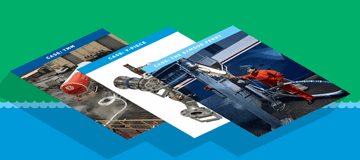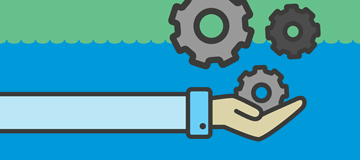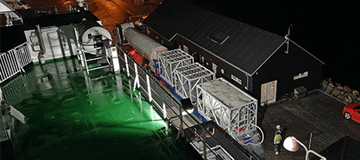Examining LNG possibilities and potential for the port of Esbjerg


Customer
The port of Esbjerg and COWI
The customer's challenge
The EU chose the port of Esbjerg to analyse how a shift to LNG can prepare the maritime sector for new and stricter emissions regulations and further sustainability.
Our solution
To deliver the EU business case, the port of Esbjerg asked COWI to examine the possibilities and potential – and they soon teamed up with KC LNG for technical assistance.
The outcome
With experience from several LNG projects, KC LNG was an invaluable support and contributed, among other things, with knowledge about transportation, bunkering and safety requirements.
Many ports have been looking into LNG bunkering solutions to meet the rising demand for cleaner fuels. To analyse the LNG possibilities and potential for a European Union business case, the port of Esbjerg chose the consulting group COWI – and they soon teamed up with KC LNG for technical assistance.
To prepare the maritime sector for new and stricter emissions regulations, the European Union asked the port of Esbjerg to investigate how a shift to LNG can further a more sustainable shipping industry.
With help from consultants from COWI, the port of Esbjerg examined how it can make itself attractive to LNG-fuelled vessels. In short, the EU business case covered:
- an overview of the LNG supply chain,
- an evaluation of possible bunkering solutions and
- an analysis of the expected market demand in the future
Naturally, knowledge about LNG was absolutely fundamental to the report. Therefore, COWI asked KC LNG to be their partner on the project.
Invaluable LNG expertise gives a strong foundation
With experience from several LNG projects, KC LNG was an obvious partner when COWI needed technical insights for the EU business case. Among other things, KC LNG examined ways to transport LNG to the port, various bunkering solutions and safety requirements. And the cooperation paid off.
“In particular, their [KC LNG, ed.] deep knowledge of the technical conditions surrounding LNG bunkering of ships has given us a strong foundation for the work. Our cooperation has made us capable of delivering a report to the port of Esbjerg, which they have been very satisfied with.” Ole Kveiborg, Chief Project Manager, COWI.
Results that reach across borders
The conclusions in the business case were based on the specific location and situation at the port of Esbjerg. That was the framework set out by the European Union. However, many of the analyses and results in the report have the potential to reach much further.
With minor adjustments, it is possible to use the business case from Esbjerg as a starting point for implementing LNG bunkering solutions at other ports too – in Denmark or elsewhere in. In that way, the business case can be helpful when ports, no matter their location, want to prepare themselves for new and stricter emissions regulations and further sustainability.










